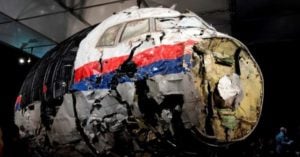
The official investigation of the rather obvious case of the MH17 disaster by the Joint Investigation Team has been excruciatingly slow. Already, on 17 July 2014, the day of the shooting, it was clear that this missile could have had only come from a regular Russian army unit. Who else would have had the opportunity to shoot from the separatist-controlled Donbas territory an airliner flying approximately 10 km high? Yet, it was the famous Bellingcat group, with its limited resources, rather than the Netherlands-led joint international governmental investigation team which provided the first in-depth and most critical research to fully proof Moscow’s responsibility for the shooting of the airliner.
Instead of quickly pushing ahead with identifying and prosecuting the perpetrators, the Dutch nation has since conducted a referendum on Ukraine’s association with the EU. This vote against the Ukrainian strive towards Europe was de facto an act of public support by the Netherlands for Putin’s mingling in East-Central Europe – a loud Dutch “Thank you!” to Moscow for murdering dozens of Dutch citizens. The Dutch referendum on the Association Agreement between Ukraine and the EU was widely celebrated in state-controlled Russian mass media as a victory for Moscow’s policies towards Europe. Now it seems that the legal procedures to finally prosecute the MH17 perpetrators are on track.
However, there is still a big gap in Western reporting and researching of the MH17 incident, in that the motives for the Kremlin’s strange behavior are not discussed deeply enough. Why exactly did Moscow send a missile as sophisticated and high-flying as the Buk to Ukraine when such a weapon was not necessary to shoot down lower flying Ukrainian military planes? What is so far missing in Western debates of the incident is proper consideration of the predominant interpretation proposed by various more or less competent Russian and Ukrainian researchers of the incident.
Many East European investigators of the circumstances of the shooting – among them the Russian military expert Mark Solonin, Russian political scientist Andrei Piontkovsky, or former head of the Ukrainian Security Service Valenty Nalyvaichenko – believe that the only full explanation for the arrival of the Russian Buk in the Donbas in July 2014 was that Moscow indeed wanted to shoot down a high-flying passenger plane. Yet, the Kremlin wanted to bring down not a Malaysian airliner, but a Russian one. The responsibility for the shooting of a Russian passenger plane over Eastern Ukraine would have been ascribed to the Ukrainian armed forces, with reference to Ukraine’s accidental shooting of a Russian passenger plane, Siberian Airlines 1812, in October 2001. The horrible incident and blaming of Kyiv in July 2014 would have provided Moscow with a casus belli to implement its “Novorossiia” (New Russia) project – i.e. the annexation of Russophone Eastern and Southern mainland Ukraine via an invasion of regular Russian military forces.
This operation would have followed the pattern of the 1999 bombings of Russian residential buildings which probably was a Russian secret service operation. The terrorist acts of September 1999 provided the Kremlin with a casus belli for starting the Second Chechen War. They also offered then Prime-Minister Vladimir Putin with an opportunity to gain public profile as defender of the Russian fatherland as well as gatherer of Russian lands, ahead of the 2000 Russian presidential elections. There are now already two in-depth Western investigations of the 1999 Moscow bombings by John B. Dunlop (The Moscow Bombings of September 1999. Stuttgart: ibidem-Verlag, 2012) and David Satter (The Less You Know, the Better You Sleep. New Haven: Yale University Press, 2016). Yet, there is no comparable Western investigation of the July 2014 MH17 incident so far – although most of the victims were EU citizens.